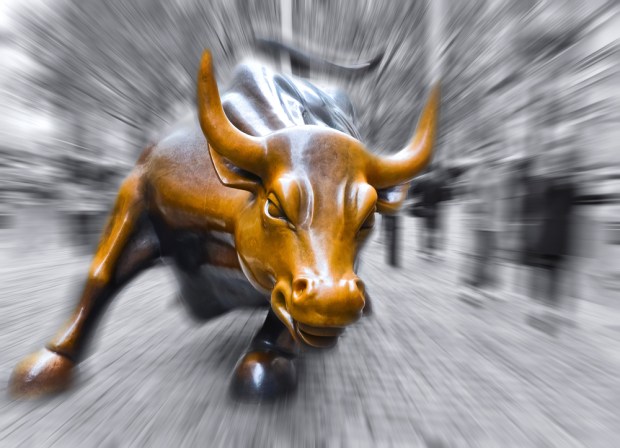March Madness | The Stock Market Edition

The stock market version of the hoops game is staggering to a close. Stocks at high absolute and historical levels may be the newest playing field set up for upsets. Yes, it came in like a lion, but investors in the Dow (and beyond) may do well to hear that bleating over yonder, as lambs may be rounding up for a woolly ride.
We all know the metaphors and analogies and imagery, and even pageantry, that surround March.
The Ides of March. March Madness. The changing of the guard from winter into spring — although in this case it seems like winter was relegated to all of three days, and possibly during Innovation Project 2017, and possibly only in Boston.
But the metaphor that is most often deployed for the month may be the old chestnut of the lion and the lamb. You know, in like a lion and out like a lamb? Originally intended to be weather-related, it can now be applied to just about anything.
Like the stock market, for instance, where the metaphor might need slight modifications — like perhaps in like a lion, out like a lamb … headed to slaughter?
Not what your portfolio wanted to hear, we’re sure. But it just might presage the stock market, which observed a milestone right at the beginning of the month and now seems poised to look out over a precipice.
First, let’s talk about psychology. Not ours. We’re OK. You’re OK. But what about the people playing the market?
Especially as pertains to headlines and bank accounts and IRAs, investors love round numbers. And we’ll use the Dow as a proxy for the market, since everyone looks at it, and everyone talks about where the Dow is, where it’s headed and where it has been.
The Dow dominates chatter from talking head professionals on TV to everyone at cocktail parties proud of their IRAs. This is even though that index is tied to, well, industrial and large cap stocks and companies that for the most part make things and do not necessarily reflect the economy as it really exists.
So let’s start with the beginning, with the alpha, before we get to the omega. Or more appropriately the “alpha male” who moved into the White House in late January.
That’s President Trump, of course, and the overarching promise that the new administration and Republican Congress would bring a new day to business owners toiling in the trenches against taxes and regulation.
In short, bottom lines would shimmer and trend upward in the absence of those two millstones around corporate collars.
Thus, the Dow, our proxy, hit a magic 20,000 number on Jan 25, just after the installation of that new administration. If a rising market is emblematic of sanguine outlooks, the future seemed bright. And scarcely a month later, in fact, just 24 days trading days, on March 1, the 21,000 barrier was breached. That threshold, hurled just after Trump have his first address to Congress, may now look like a ceiling.
At the time, news outlets like MarketWatch reported that the push to that 20,000 level came on the back of “renewed hopes” that Trump would be able to deliver on ramped-up fiscal spending, such as the $1 trillion infrastructure initiative to be slated over a decade.
The rush to 21,000 on the Dow came amid earnings reports for the fourth quarter that were … OK, by and large, but really just OK. Interest rates on the rise? That is good for banks, eventually.
But beyond the financial services realm, let’s step away from the Dow for a second. Adjusted for accounting items, the average P/E ratio in the S&P 500 is 25 times, according to various estimates, while the longer-term averages of that multiple, as The New York Post reminded us early this month, has been 15 times. That’s a big gap, nosebleed-high, and corporate profits will need goosing to grow into those multiples with an economy growing at 2 percent.
Meanwhile, as this is being written, with that same Dow bourse at 20,660-ish, news comes from The New York Times that the hedge fund industry — once the envy of many on Wall Street due to returns, and especially compensation returns for the captains of that industry — is, to quote a headline, “in turmoil.”
Eton Park became the first hedge fund of size to shutter in 2017 ($14 billion in assets under management), with results flat into the end of the first quarter and far outpaced by the broader market gauges (pick any of ’em).
By way of example, said the Times, an index created to track hedge fund returns writ large was up 2.2 percent, while the S&P (that industry’s general benchmark) was up 5 percent through the end of last month. So … even the rich can be seen as struggling, and likely to remain struggling.
All this makes 21,115 on the Dow, the record close, seem long ago and far away at 20,660. The problem may be, now that an unceremonious retraction of the health care legislation has come to pass, setting the stage for skepticism over the ease with which other legislation might be approved, the speed at which a leg down may transpire. After all, speed thrills. But speed kills, too. Or, to borrow another aphorism as March moves away from madness, beware April showers.
